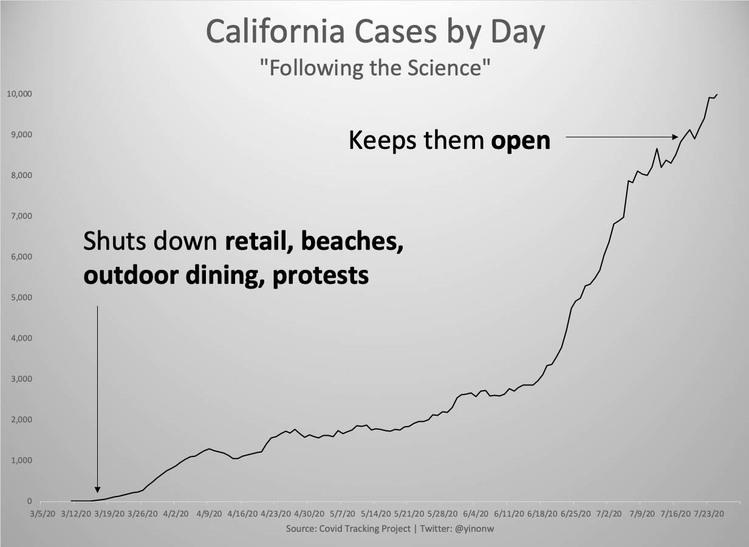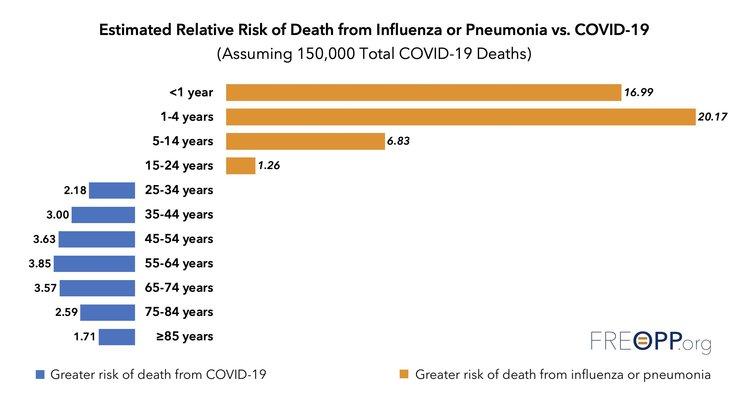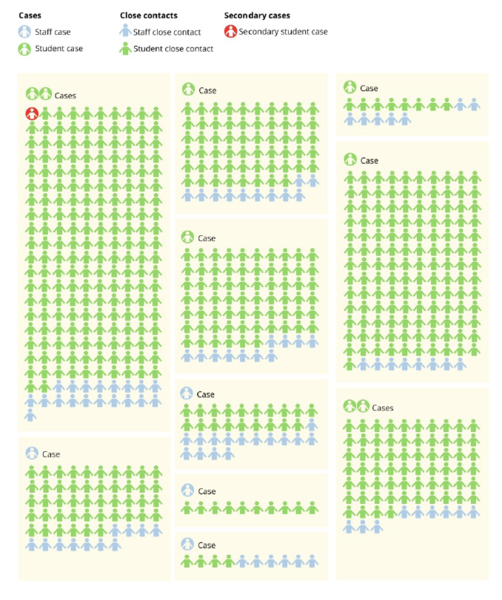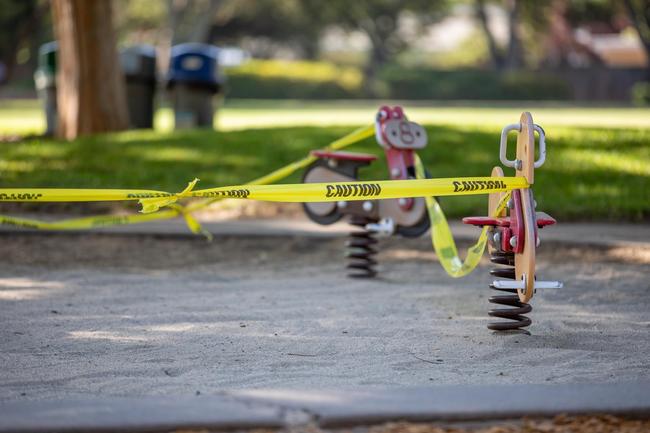Authored by Yinon Weiss via RealClearPolitics.com,
Politicians speak about following the science to set COVID-19 policy, but their decisions are more about political objectives than they are about medical efficacy.
Why else did California Gov. Gavin Newsom shut down retail businesses in March when the state had under 300 cases per day but allow them to be open in July when the state clocked in at over 10,000 cases per day?

Why else would Kentucky Gov. Andy Beshear allow liquor stores to stay open but close down churches? Why did Michigan Gov. Gretchen Whitmer insist that buying lottery tickets remain legal but made it illegal to buy garden supplies? And how did New York Gov. Andrew Cuomo use “science” to prohibit outdoor funerals but allow outdoor protests?
But as badly as our lockdowns have damaged local businesses, a potentially even bigger problem is created by the physical closure of schools. One of the most important functions of a civil society is to protect and educate its children, and the cancellation of in-person education stands to become one of the most detrimental acts of collateral damage during this pandemic.
California currently expects its 5-year-olds to complete kindergarten exclusively through online distance learning. For this dubious undertaking, the politicians are given passionate political cover. The Los Angeles Teachers Union maintains that “the only people guaranteed to benefit from the premature reopening of schools amidst a rapidly accelerating pandemic are billionaires and the politicians they’ve purchased” — as if billionaires typically send their kids to L.A. public schools. The wealthy will send their children to in-person private schools or hire additional tutors, while most American families will suffer from a widening education gap that could set their kids back years. Worst of all, none of this is medically substantiated.
Children Are Safe
There is a great deal of fear generated in the media about risk to children, but the truth is that children are incredibly resistant to coronavirus. So much so that children are far more likely to die from the flu, or even just from driving to school, than from COVID-19.

The CDC has recorded a total of 20 COVID-19 deaths in children ages 5-14 compared to almost 2,000 deaths from non-COVID causes in the same time period for the same age group. It means children have been 100 times more likely to die from non-COVID causes during the pandemic than from COVID. This puts the risk of COVID death for children 5 to 14 in the same ballpark as deaths by lightning.
Claims of long-term damage or mystery illnesses have not been backed by any definitive evidence and they therefore serve more as a scare and intimidation tactic than as a medical guide. The truth is that children so far have had around a 1 in 20,000 rate of COVID-19 hospitalizations, according to the CDC. While controversial to some, Sweden’s policy of keeping primary schools open even at the height of the pandemic serves as an excellent counterpoint. With over 1 million children, Sweden did not have a single death of a school-aged child despite full attendance and no masks.
Sweden is not alone in sending kids to school. Denmark opened its schools back up in April. Finland kept normal class sizes when it reopened. Parts of Montana opened schools back in May, as did parts of Canada and Germany. The Netherlands announced that Dutch students didn’t even need to socially distance anymore as they experienced very low transmission rates. Schools all across Europe have reopened successfully, both with and without masks. The risk to the children themselves therefore cannot be used as a justification for the massive damage created by ceasing in-person education. But what about the teachers?
Transmission From Children to Adults Is Rare
Science magazine, a preeminent journal that dates to 1880, recently published a comprehensive analysis studying school reopenings around the world and concluded that “younger children rarely spread the virus to one another or bring it home.”
A study in Switzerland, including a review of World Health Organization contact tracing, failed to find evidence of a single case of a child passing coronavirus to an adult. A comprehensive study in Iceland isolated SARS-CoV-2 samples from every positive case, sequenced the virus genome, and tracked the mutation patterns. This analysis, along with contact tracing, allowed researchers to identify definitively who passed the virus to whom. The study concluded “[E]ven if children do get infected, they are less likely to transmit the disease to others than adults. We have not found a single instance of a child infecting parents.” A study of schools in Ireland found “no evidence of secondary transmission of COVID-19 from children attending school.”
New Zealand conducted a study across 15 schools in which 18 individuals with COVID-19 were in close contact with 735 other students and 128 staff members, yet no teacher or staff member contacted COVID-19 from any of the initial 18 cases and only two students out of the 735 would later test positive. The New Zealand study concluded: “Our investigation found no evidence of children infecting teachers.”

Cases and close contacts among teachers and students in 10 New Zealand high schools showing one secondary case in a student. Source: “COVID-19 in Schools – the Experience in NSW”
Denmark, The Netherlands, Finland, Belgium, and Austria all opened schools and “found no evidence of increased spread of the novel coronavirus after schools reopened.” The same was found in scientific studies in France, Sweden, and Germany. A leading British epidemiologist goes even further to claim there is not a single known case of a teacher being infected of coronavirus from a student anywhere in the world.
Since there could still be a rare school outbreak, such as experienced in Israel, students with high-risk household members should be given a distance education option, and teachers who believe themselves or their households to be at high risk should be allowed to teach remotely, balancing the risk for all parties. This way healthy students can be be educated by healthy teachers. With science overwhelmingly pointing to reopening schools, why do so many schools intend to remain closed?
The Politics of Teaching
If children are at minimal risk, transmission to adults is rare, and both can be accommodated with optional distance learning, why are some schools suspending all in-person education? It’s certainly not because of the parents, who would be the last people to send their children into a dangerous situation. The vast majority of parents support reopening schools with modifications, perhaps because they best understand the cost-benefit of depriving their children of a full education.
The reason many schools won’t open, just like why so many places originally locked down, comes back to fear and politics. The Los Angeles’ teachers union, for example, recently came out with a list of demands before returning to teach in person. These included defunding the police, ending charter schools, “Medicare for All,” and a new wealth tax. It was not until the union came out with these demands that Newsom announced closure of nearly all schools in California — overriding individual school districts that had planned to open.
In a brazen announcement, the union put in bold words the conclusion of their argument: “Normal wasn’t working for us before. We can’t go back” – openly conveying that this negotiation was more about changing what they didn’t like about American education and society before the pandemic, and certainly not about what is best for children. Despite overwhelming scientific evidence pointing to the safety of school reopenings, union President Cecily Myart-Cruz labeled doing so “anti-science.” Yet, it’s also no wonder that so many teachers have concern for their safety now, as media outlets like CNN continue to run sensationalized stories building up school reopenings as dangerous while downplaying the actual science and evidence.
Day Care at School Gives the Game Away
Cities left with little choice due to their political environment are trying to mitigate the situation for parents. New York City will offer day care for 100,000 students attending schools that are only partially reopening, though this largely defeats the point of keeping children from being at school in the first place. If school closing advocates are correct, this would only expose children to a broader cohort of peers and would make teachers, children, and their caretakers less safe.
Some districts in California are offering day care right on school campus for half and full day programs, at a cost. So parents can pay to send their kids to school to be watched but not to be taught. Ironically, a student might be physically at a school under the watch of paid day care while simultaneously “attending” the very same school online.
It is clear that science is not the driving principle behind any of these policies, which helps explain why both the CDC and American Academy of Pediatrics have advocated for opening on-campus education.
Teachers Are Essential Workers
There are few functions in society more essential than educating our children. “Education of our children is an essential Texas value,” Texas Attorney General Ken Paxton recently wrote in a letter directing that health officials cannot completely close schools, and they certainly cannot preemptively close schools with no evidence of local school spread.
The CDC recently concluded that “in-person schooling is in the best interest of students, particularly in the context of appropriate mitigation measures similar to those implemented at essential workplaces.”
The education of our children is too essential to be used as a political bargaining chip.
If nurses can come to work every day and treat the sick and infected, then certainly teachers can be expected to come to work and teach the young and healthy.











